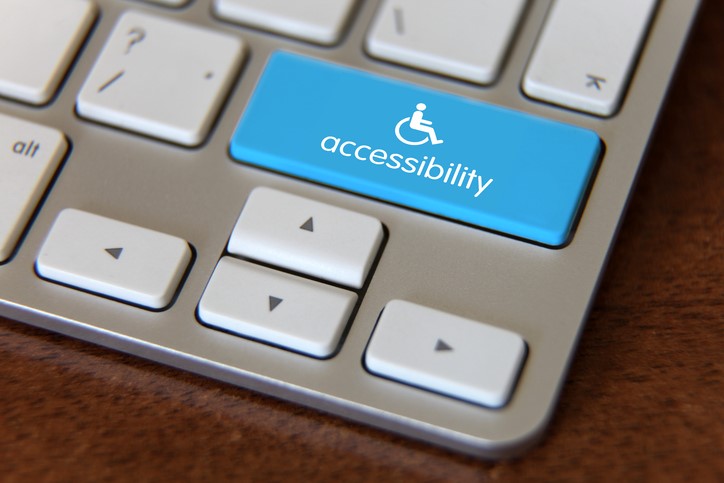Public boards must make their meetings and materials available to as many people as possible. That once meant posting meeting notices and minutes in a conspicuous place, holding meetings at a convenient venue and handing out copies of materials during the meeting. With other alternatives, the limits of paper-based communications are now becoming apparent: Some citizens could not get to the town center or the meeting venue, not everyone could read the materials and the materials handed out in meetings could end up anywhere without a trace. Today, board business can reach a broader range of constituents while keeping important documents out of harm's way. Paperless meetings supported by board software with accessibility features keeps materials at once more widely available and more secure.
Contrast that controlled access to the limitless proliferation that paper copies make possible. If a city councilor leaves budget materials in her living room, her teenage daughter or a hired cleaner might find confidential material there. The risk multiplies as the city councilor takes her documents with her to a coffee shop and then to an airport. Anyone could steal the documents without a trace.
'But it's out there on the World Wide Web!' a traditionalist will scream. 'Isn't the risk of hacking greater than the risk of a random stranger reading over my shoulder?' It could be, as small public entities are surprisingly appealing targets of cybercrime. That's why it's essential to get board software with maximal security features. Storage on a private server puts data beyond the reach of cybercriminals, which is not the case for file-sharing sites such as Google Docs. Furthermore, good board software provides full 256-bit encryption, building an added moat around the documents that drive a board's business.
Such limitations did, nonetheless, reduce the 'openness' of meetings. For reasons that are more cultural than infrastructural, younger people typically did not make the trip to Town Hall; town and school meetings have long attracted a graying demographic. People who cannot leave their homes because they are not ambulatory could see the material only if they requested mailed copies in writing. People with psychological barriers to leaving their houses would face the same disadvantage; this population includes agoraphobes and those ashamed of highly disfiguring conditions (such as burn victims). Those with extremely busy schedules might not have time to pass by the posting place. That could be a coal miner working late shifts or a father in a two-earner professional household.
While paperless distribution makes meeting notices accessible to more people than does the posting of paper copies, it still excludes many handicapped constituents. For the blind, a portal presumes eyesight just as a paper copy does. He needs a text-to-audio conversion so his computer will read the notice aloud. ADA regulations now require public entities to make their materials available in that way. To broaden the reach to accommodate multiple handicaps, more than a paperless portal is needed. The portal must have accessibility features.
A portal provider should know the letter of the law and rub shoulders with the regulating community to anticipate future updates, because the laws are complex ' and they change. Less savvy software companies think they bring their clients into compliance, but they do not. They commonly miss such requirements as:
The consumer is well advised to watch out for overconfidence. Many software providers claim compliance while not providing cross-device compatibility or sufficiently robust video streaming, for instance. With limited development dollars, mainstream software companies have no incentive to invest in such features.
Going Paperless
Going paperless is a big step. Those over 40 often find solace in paper copies; they seem 'real.' The generational divide makes the present moment a transition period, with redundant paper copies of digital materials always on hand. The obvious advantages of paperless meetings may speed the transition, as older members often convert once they see how effective paperless meetings are. A paperless meeting is more secure, more environmentally friendly, less labor intensive and visible to more people than a meeting that relies on paper copies.Security
As long as they are kept on a private server, meeting agendas, attachments and minutes are actually more secure in digital form than on paper. This counterintuitive reality rests on the ability to control digital distribution. Materials posted on a good board portal can be made available only to those authorized to view them. Indeed, different versions of the same document can be accessed by the public audience, by administrators, and by executives or board members. (This software feature is called role-based authorization.)Contrast that controlled access to the limitless proliferation that paper copies make possible. If a city councilor leaves budget materials in her living room, her teenage daughter or a hired cleaner might find confidential material there. The risk multiplies as the city councilor takes her documents with her to a coffee shop and then to an airport. Anyone could steal the documents without a trace.
'But it's out there on the World Wide Web!' a traditionalist will scream. 'Isn't the risk of hacking greater than the risk of a random stranger reading over my shoulder?' It could be, as small public entities are surprisingly appealing targets of cybercrime. That's why it's essential to get board software with maximal security features. Storage on a private server puts data beyond the reach of cybercriminals, which is not the case for file-sharing sites such as Google Docs. Furthermore, good board software provides full 256-bit encryption, building an added moat around the documents that drive a board's business.
Environmental Stewardship
Paper copies leave a big footprint on the natural environment. Of course, trees must be cut down for their pulp, the pulp must be processed and most of the resulting paper eventually ends up in landfills. Local ecosystems are thrown out of balance, more carbon assaults the atmosphere, there is less carbon dioxide to absorb that carbon and arable land is diverted from food production. If the older generation is inured to the destruction that ensues, their successors have been educated to find the prospect of global warming unconscionable. Younger generations increasingly seek green organizations when they do business.Labor Savings
Assembling an old-school board packet takes a lot of manpower. The board chair or her administrative assistant prints out all the documents, makes copies, creates a makeshift collation and assembly line, stuffs envelopes, addresses them, then goes to the post office, stands in line, pays hefty postage and finally calls it a day. With just a few clicks of the mouse, she could drag and drop the agenda, the committee reports, the minutes and any other attachments onto a public-facing board portal. No toner shortages. No paper jams. No thumbtacks. No stamps. The board and the public could access all the materials from the comfort of their living rooms.Greater Visibility
Who saw the meeting notices on the billboard at Town Hall? It could be reached by anyone who could walk by the building. That limits it to people who can walk, people who are psychologically capable of leaving the house, people with the leisure to take a possible detour as they run errands and people who can read. Before technology provided alternatives, we tolerated these limitations, perhaps not even noticing them.Such limitations did, nonetheless, reduce the 'openness' of meetings. For reasons that are more cultural than infrastructural, younger people typically did not make the trip to Town Hall; town and school meetings have long attracted a graying demographic. People who cannot leave their homes because they are not ambulatory could see the material only if they requested mailed copies in writing. People with psychological barriers to leaving their houses would face the same disadvantage; this population includes agoraphobes and those ashamed of highly disfiguring conditions (such as burn victims). Those with extremely busy schedules might not have time to pass by the posting place. That could be a coal miner working late shifts or a father in a two-earner professional household.
While paperless distribution makes meeting notices accessible to more people than does the posting of paper copies, it still excludes many handicapped constituents. For the blind, a portal presumes eyesight just as a paper copy does. He needs a text-to-audio conversion so his computer will read the notice aloud. ADA regulations now require public entities to make their materials available in that way. To broaden the reach to accommodate multiple handicaps, more than a paperless portal is needed. The portal must have accessibility features.
Accessibility Features
Such features make meeting materials easy to use for people with a multitude of cognitive, sensory and manual disabilities. The blind and the deaf only scratch the surface of the disabled community, and public materials must reach them all. Some portals have everything that the law requires, but many do not.A portal provider should know the letter of the law and rub shoulders with the regulating community to anticipate future updates, because the laws are complex ' and they change. Less savvy software companies think they bring their clients into compliance, but they do not. They commonly miss such requirements as:
- Flexible Feedback Mechanism. Consider how someone gives input to a forum for public feedback. If it is impossible to provide that feedback without using a mouse, the site is not compliant.
- Versatile Video Streaming. If a portal includes video, that material must also be able to be viewed from multiple devices ' and it must be closed-captioned.
The consumer is well advised to watch out for overconfidence. Many software providers claim compliance while not providing cross-device compatibility or sufficiently robust video streaming, for instance. With limited development dollars, mainstream software companies have no incentive to invest in such features.





